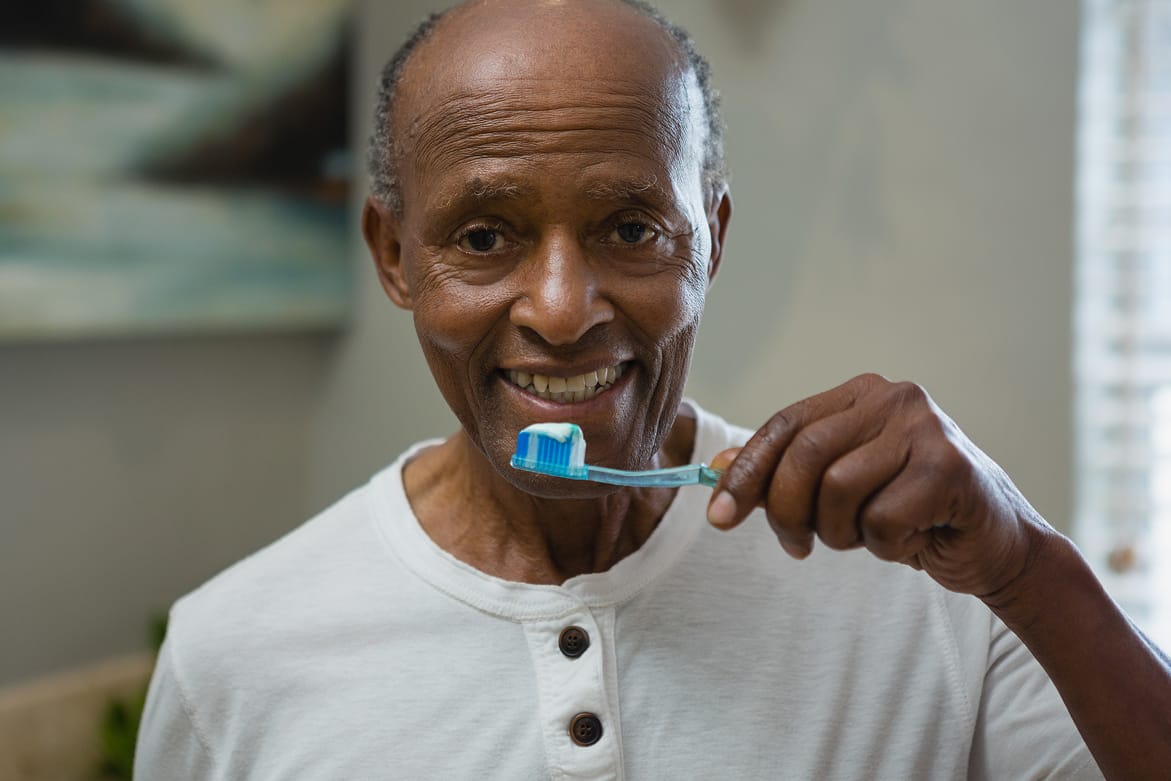For many patients, the thought of a dental appointment triggers a wave of anxiety that has nothing to do with the schedule and everything to do with fear. This hesitation is a natural response, but it often causes people to delay necessary care until a minor issue becomes a significant health problem.
At Smiles by Choice, we believe that fear should never stand between you and a healthy smile, which is why modern dentistry prioritizes pain management alongside clinical excellence.
Our practice utilizes various forms of dental anesthesia to ensure your experience is as calm and comfortable as possible. By removing the physical sensation of pain and reducing mental stress, we allow you to receive the care you need without worry.
Understanding how these methods work can help demystify the process and give you the confidence to book your next visit.
The Basics of Local Anesthesia
The most common method used in dentistry is local anesthesia, which serves as the foundation for most routine visits. This approach works by temporarily blocking the nerves in a specific area of your mouth from sending pain signals to the brain. You remain fully conscious and alert throughout the appointment, allowing you to communicate with our team, but you will not feel any sharpness or discomfort in the area we treat.
The process typically begins with the application of a topical gel to the gum tissue, which numbs the surface skin to minimize the sensation of the injection. Once the area is prepared, we administer a local anesthetic like lidocaine.
While you might feel a brief moment of pressure, the medication works quickly to eliminate sensation. This method is ideal for standard procedures such as cavity fillings, crown preparations, or a root canal, where we need to ensure the tooth is completely numb while you stay awake.
After the appointment, the numbness will persist for a few hours before gradually wearing off, leaving you free to return to your daily routine.
The DentalVibe® Difference
For many patients, the anxiety of a dental visit centers on a single moment: the injection.
We know that the fear of the needle often outweighs the fear of the actual work. To address this, our practice uses DentalVibe®, a handheld tool that changes how you experience local anesthesia.
DentalVibe® uses the Gate Control Theory of pain. This theory states that the brain can only process so many sensations at once. By introducing a gentle vibration, we close the “gate” to the pain signal of the injection.
This technology improves the experience in several ways:
- Pain Blocking: The soothing vibration travels to the brain faster than pain signals, preventing you from feeling the prick of the needle.
- Distraction: The device produces a mild sound that distracts your mind while we administer the anesthetic.
- Enhanced Absorption: The vibration helps the medication disperse into the tissue, which often allows the numbing effect to take hold faster.
- Reduced Anxiety: This is an excellent solution for children or anyone with a specific phobia of needles, turning a source of stress into a non-event.
Other Sedation Dentistry Options for Anxiety Relief
We understand that for some patients, numbing the tooth is not enough to calm the nerves. If you suffer from dental anxiety, have a sensitive gag reflex, or require a longer dental treatment, we might recommend sedation dentistry.
This approach focuses on relaxing your mind and body so that the sights and sounds of the dental office fade into the background.
We tailor the level of sedation to match your anxiety level and the complexity of the work we need to do:
Nitrous Oxide
Often referred to as “laughing gas,” this is a mild sedative that you breathe through a small mask placed over your nose. It induces a feeling of relaxation and well-being almost immediately, yet you remain awake and responsive.
The primary benefit of nitrous oxide is that the effects clear from your system within minutes of removing the mask, meaning you can drive yourself home safely after your visit.
Nitrous Oxide
For a deeper level of relaxation, we may prescribe oral sedation. You take a pill about an hour before your appointment, and by the time you arrive, you will feel significantly drowsy and unconcerned about the procedure.
While you remain conscious and can follow instructions, many patients feel so relaxed that they do not remember the details of the visit. Because the effects last longer, you will need a companion to drive you to and from our office.
Advanced Options for Complex Procedures
When we address more extensive needs, such as complex oral surgery, we may need to utilize deeper levels of anesthesia to ensure your absolute comfort. Procedures like impacted wisdom tooth removal or reconstructive jaw surgery often require that the patient be completely unaware of the work taking place.
In these instances, we may discuss deep sedation or general anesthesia. Under deep sedation, you exist on the edge of consciousness; you breathe independently but are unlikely to respond to stimulation or retain any memory of the surgery. General anesthesia renders you completely unconscious, meaning your muscles relax fully and you are asleep for the duration of the procedure.
Safety is our primary concern during these deeper states of sedation. A specialized team member monitors your vital signs, including heart rate, blood pressure, and oxygen levels, throughout the entire dental procedure. This rigorous monitoring ensures your body handles the anesthesia safely while our dentists focus on delivering precise results.
Determining the Right Approach for You
We don’t view dental anesthesia as a one-size-fits-all solution. Selecting the right method requires a careful review of your medical history and a clear understanding of your personal comfort levels.
Before we begin any treatment, we check for existing medical conditions such as heart disease, diabetes, or respiratory issues that might influence how your body processes medication. We also review your current prescriptions to prevent any negative interactions.
The nature of the dental procedure also dictates the choice of anesthesia. A simple cleaning generally requires no numbing, while a filling necessitates local support. If you are undergoing extensive work, we might suggest a combination of local numbing and sedation to keep you comfortable for a longer period. We encourage you to participate in this decision by asking questions and expressing your concerns so we can build a plan that makes you feel secure.
Recovery and Managing Side Effects
Recovering from dental work is usually a straightforward process, but knowing what to expect helps you plan your day. If you received local anesthesia, you must be mindful of your numb lip and tongue to avoid accidental biting or burning until the sensation returns. If you underwent sedation, your recovery will involve rest and hydration at home while the medication leaves your system.
While modern anesthesia is extremely safe, you should be aware of potential side effects so you can manage them effectively. Common post-procedure experiences include:
- Nausea or Vomiting: This is more common with general anesthesia but can occur with sedation.
- Drowsiness: You may feel groggy for several hours or the remainder of the day.
- Minor Bruising: You might notice slight discoloration or tenderness at the injection site.
- Shivering: It is normal to feel cold or shiver as the anesthesia wears off.
These symptoms are typically mild and temporary. However, if you experience persistent issues, we are always just a phone call away to provide guidance.
A Partnership for Better Health
Avoiding the dentist due to fear puts your oral health at risk, but it does not have to be that way.
At Smiles by Choice, our dentists, Dr. Adam Timm and Louise First, possess the tools and training to ensure your time in the chair is free from pain and anxiety. By combining advanced dental anesthesia techniques with a compassionate approach, we help you maintain a healthy smile without the stress.
We invite you to discuss your fears with us openly. Whether you need the light support of nitrous oxide or the total relaxation of general anesthesia, we will customize a plan that fits your needs.
Contact our office today to schedule your consultation and experience a new standard of calm, confident dental care.
FAQs
At Smile Perfection, you will receive local anesthesia before the removal of a wisdom tooth. Sometimes our dentist will use general anesthesia (a type of sedation dentistry), especially if you are having more than one tooth removed. General anesthesia is used to prevent pain throughout your body and often causes you to sleep.
Local dental anesthesia affects a small part of the body, such as a tooth or area of gum. It does not affect the patient’s cognitive abilities, and they stay awake and alert throughout treatment. Sedation dentistry is the administration of medication that relieves a patient’s anxiety and allows them to reach a deep level of relaxation, even drifting off to sleep during treatment.
Local anesthesia is very safe and commonly used on patients of all ages. Though few, there are side effects, and they include: hematoma, numbness outside of the targeted area, racing heart.






